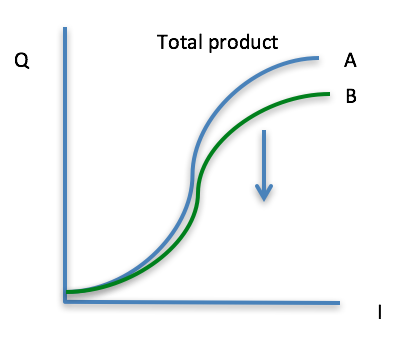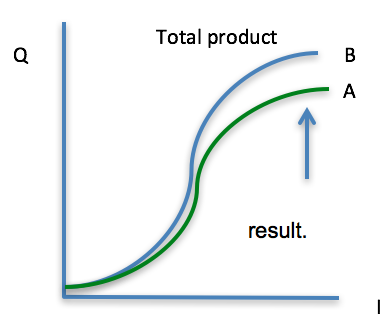Let’s turn now to the factors that affect agricultural production. Simply put, what will lead to increases or decreases in final products? We’ve seen that increasing inputs up to a point will increase the output. But, what about external factors: ones that we cannot control?
Consider harvest time and agricultural crops. What can you think of that will influence the size of the harvest either positively, or negatively?
What about food production? Are there external factors that will increase the total output, or decrease it?
Finally, what can happen if you’re growing a willow crop that will be used for energy? Consider possible external effects given that this crop might take eight years to mature.
Make a list of how the size of the harvest can change as a result of factors beyond your control.
Because much agricultural production takes place on the land (not necessarily in a greenhouse or a lab), we have to consider the climate and the weather as an external factor that can affect the production process. If the weather is favourable, the farmer might be able to harvest a bumper crop and with any luck, make a little more money. On the other hand, there are many examples of crop failures as a result of too much or not enough moisture, or too much or too little heat for example. On top of that, we have to worry about hail and wind damage, wildfires, insects such as locusts, or diseases that can affect both plants and animals, and the soil.
Each of these situations can affect the total amount produced and eventually affect how much profit the farmer, rancher, forester or baker can make. Examine the images below and explore how the production function changes for each case.

Figure 4-6a: Drought. Source: https://en.wikipedia.org/wiki/Drought. Permission: CC BY 3.0. b: Permission: Courtesy of course author Hayley Hesseln, Department of Agriculture and Resource Economics, University of Saskatchewan.
 a) Drought conditions. In this example, the total product falls as a result of too little moisture. This is reflected in the reduction of quantity over all units of input.
a) Drought conditions. In this example, the total product falls as a result of too little moisture. This is reflected in the reduction of quantity over all units of input.
What other external factors might constitute other decreases in total production?

Figure 4-7: Giant pumpkin. Permission: Courtesy of course author Hayley Hesseln, Department of Agriculture and Resource Economics, University of Saskatchewan.

b) Bumper crop: in this case, the warm weather was such that the total yield for pumpkins increased across all levels of input. You should note as well that average physical production (APP) would also rise as a result.
Can you think of other factors that would lead to increases in production?
The external effects of weather and other environmental factors can greatly affect the total product, average product, and the rates of growth in output. It is important to remember that the example illustrations above are just models of what is happening in the world all around us and should be used to help explain what happens during production processes.
It is also important to think about how different topics in agriculture are related through production. If you are a soil scientist, your knowledge of soil types, soil profiles and nutrients can help farmers make better production decisions that will lead to greater output. Those of you who will study plant science might look at genetics and how to change the actual plant to increase yields or make plants more resistant to drought or insects, for example. In this way, it is important to work together to reap the benefits of scientific findings from all agricultural disciplines. Let’s look next at some examples of how technology is being used to change production.
